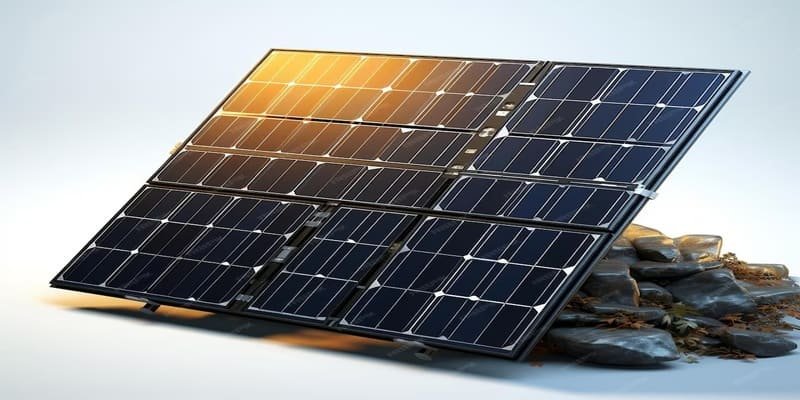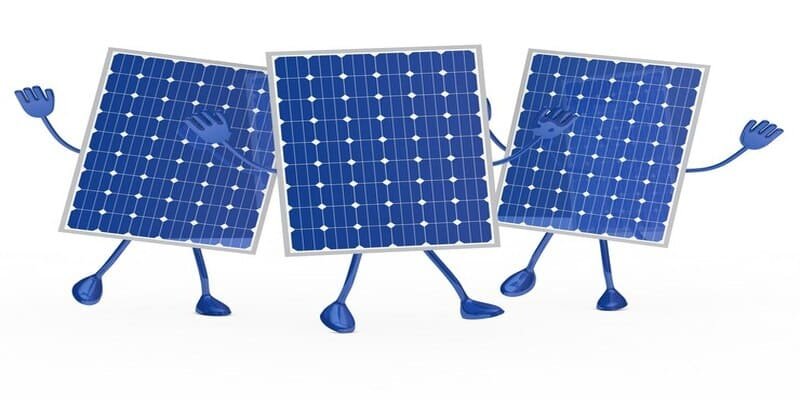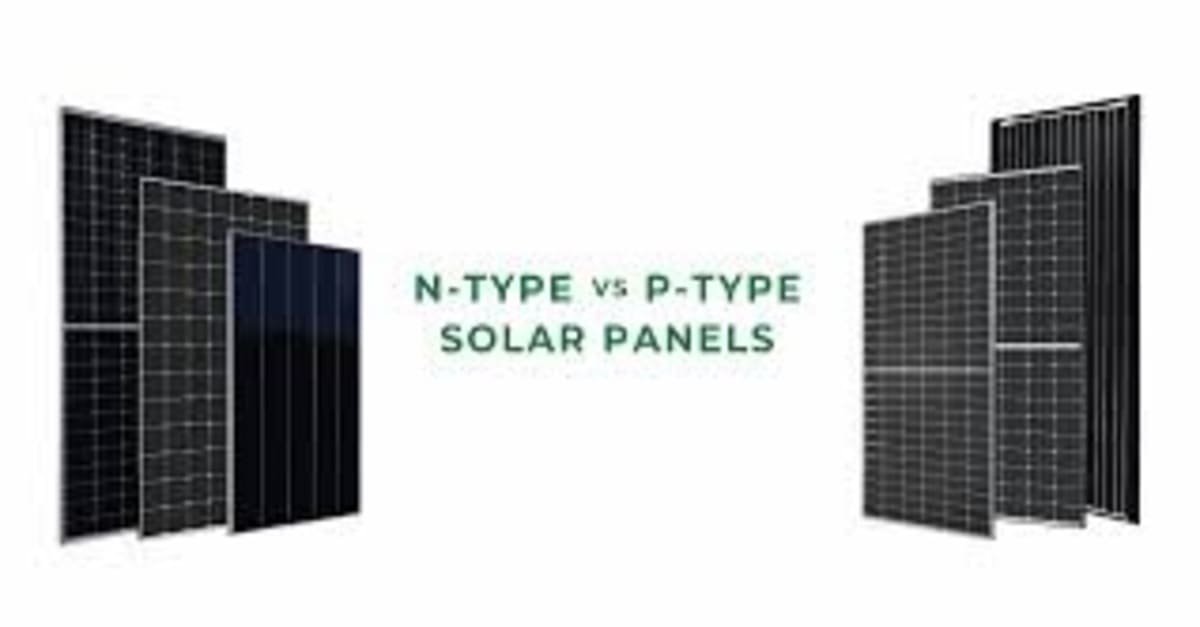In the rapidly evolving world of solar technology, choosing the right type of solar cell for your project can be a critical decision with long-term impacts on performance and return on investment. This comprehensive guide dives deep into the nuances of N-type and P-type solar cells, offering insights to help you make an informed choice.
What Are P-type Solar Panels?
P-type panels, the most pervasive in the market, use boron-doped silicon as their base material, creating a positive (p) charge. They have dominated solar panel production due to their cost-competitiveness and reliability over the last four decades.

How Do P-type Solar Panels Work?
When light hits the silicon cells in P-type panels, electrons are knocked free and flow through the material to produce electricity. This flow is facilitated by the positive charge created by the boron dopant.
Material Used in P-type Solar Panels
The primary material in P-type solar panels is silicon doped with boron. This combination has been preferred for its abundance and cost-effectiveness.
What Are N-type Solar Panels?
In contrast, N-type panels use phosphorus-doped silicon, which introduces a negative (n) charge. This minor alteration in the doping process yields significant improvements in efficiency and performance.

How Do N-type Solar Panels Work?
Similar to P-type, N-type solar panels generate power when sunlight activates electrons. However, the negatively charged silicon helps reduce electronic barriers, facilitating enhanced electron flow and, subsequently, greater efficiency.
Material Used in N-type Solar Panels
N-type solar panels leverage silicon doped with phosphorus. This material choice is pivotal in achieving higher efficiency and resistance to light-induced degradation.
Structure Difference Between P-type & N-type Solar Panels
Both P-type and N-type solar panels consist of layered structures, but they differ in the type of material used for doping, which creates a region with either more positive charges (holes) or negative charges (electrons). This difference has a significant impact on the panel’s performance.
-
Doping:
- P-type: Boron doping creates a positive charge in the bulk region (the majority of carriers are holes).
- N-type: Phosphorus doping creates a negative charge in the bulk region (majority carriers are electrons).
-
Emitter:
- Both use the opposite doping material in a thin top layer called the emitter to create a P-N junction, which is crucial for electricity generation.
-
Light-Induced Degradation (LID):
- P-type panels are susceptible to LID, where light exposure causes a drop in efficiency over time.
- N-type panels are largely resistant to LID due to their different doping material.
| Feature | P-type Solar Panel | N-type Solar Panel |
| Doping Material (Bulk) | Boron (creates positive holes) | Phosphorus (creates free electrons) |
| Doping Material (Emitter) | Phosphorus (creates free electrons) | Boron (creates positive holes) |
| Majority Charge Carriers (Bulk) | Holes (positive) | Electrons (negative) |
| Light-Induced Degradation (LID) | Susceptible | Resistant |
Benefits of P-type Solar Panels
- Cost-Effective: P-type cells maintain a cost advantage due to simpler manufacturing processes.
- Widely Available: Their longstanding presence in the market ensures accessibility and proven reliability.
- High Immunity to Radiation: This makes them a favorable choice for certain environments.
Benefits of N-type Solar Panels
- Higher Efficiency: N-type cells typically exhibit greater conversion efficiency, making them suitable for applications where space is at a premium.
- Reduced Degradation: They are not as susceptible to light-induced degradation, ensuring longer performance life.
- Better Performance in Varied Conditions: They show superior performance under low-light conditions and higher temperature tolerance.
Comprehensive Comparison of P-type and N-type
A comprehensive comparison is given below in a tabular farm.
| Feature | P-type Semiconductor | N-type Semiconductor |
| Majority Charge Carrier | Holes | Electrons |
| Minority Charge Carrier | Electrons | Holes |
| Conduction Mechanism | Movement of holes (absence of an electron) | Movement of free electrons |
| Doping | Acceptor atoms (elements with 3 valence electrons) | Donor atoms (elements with 5 valence electrons) |
| Fermi Level | Closer to the valence band | Closer to the conduction band |
| Conductivity | Lower than n-type for the same doping level (due to lower hole mobility) | Higher than p-type for the same doping level (due to higher electron mobility) |
Additional Points:
- Both p-type and n-type semiconductors have increased conductivity compared to intrinsic semiconductors (pure silicon or germanium).
- The concentration of majority carriers in both p-type and n-type materials is typically in the range of 10^15 to 10^20 cm^-3.
- The formation of a p-n junction (the meeting point of p-type and n-type regions) is crucial for many electronic devices like transistors and diodes.
Factors to Consider When Choosing Between N-type and P-type Solar Panels
- Budget Constraints: P-type panels might be more viable for tight budgets.
- Efficiency Requirements: For limited space or high-performance demands, N-type could be the better choice.
- Lifetime Value: Consider the long-term benefits of N-type’s higher efficiency and lower degradation rates.
- Environmental Conditions: N-type panels’ superior performance in high temperatures and low-light conditions might be decisive.
Applications of N-type and P-type Solar Cells
P-type cells have been the backbone of residential and commercial solar installations, whereas N-type cells are increasingly chosen for high-end, efficiency-critical installations like utility-scale projects and challenging environmental conditions.
P-Type Solar Cells:
- Cost-Effective Option: Due to their mature manufacturing process, P-type solar cells remain a cost-effective choice for many applications.
- Widely Used in Residential and Commercial Installations: P-type panels dominate the current market share, making them a popular option for homes and businesses.
- Suitable for Moderate Climates: While efficiency drops slightly in high temperatures, P-type panels can still function well in regions with moderate climates.
N-Type Solar Cells:
- High-Efficiency Power Generation: N-type cells offer superior efficiency due to lower degradation and better temperature performance. This makes them ideal for maximizing power output, especially in large-scale solar farms.
- Applications Demanding Long-Term Performance: N-type panels are a good choice for installations requiring reliable and consistent power generation over an extended period.
- Emerging Market for High-Performance Needs: As manufacturing costs decrease, N-type technology is becoming increasingly attractive for residential and commercial applications where high performance outweighs initial cost concerns.
Why Do P-type Cells Dominate in Solar Panel Production?
Primarily due to lower production costs and established manufacturing processes. However, as N-type technology matures and costs decrease, this dominance is poised to be challenged significantly.
Advantages and Disadvantages of N-type and P-type Solar Cells
The advantages of N-type cells include their higher efficiency and resistance to degradation, whereas their higher cost and smaller market share are drawbacks. P-type cells benefit from their low cost and availability, though they suffer from degradation and slightly lower efficiency.
| Feature | N-type Solar Cells | P-type Solar Cells |
| Efficiency | Higher (up to 25.7%) | Lower (up to 23.6%) |
| Light-induced degradation (LID) | Less susceptible | More susceptible (can lose up to 10% efficiency over time) |
| Temperature performance | Maintains efficiency better in high temperatures | Efficiency drops more in high temperatures |
| Manufacturing cost | Higher | Lower (mature manufacturing process) |
| Availability | Less common | Widely available |
| Warranty | Potentially longer power degradation warranty | Standard warranty lengths |
Conclusion
The evolution from P-type to N-type solar cells marks a significant step forward in solar technology, promising more efficient, durable, and cost-effective solutions in the long run. While P-type panels currently dominate the market, the shift towards N-type technology is inevitable as it offers substantial benefits, especially in efficiency and lifespan. For those at the crossroads of making a decision, considering both immediate needs and future returns is key.
